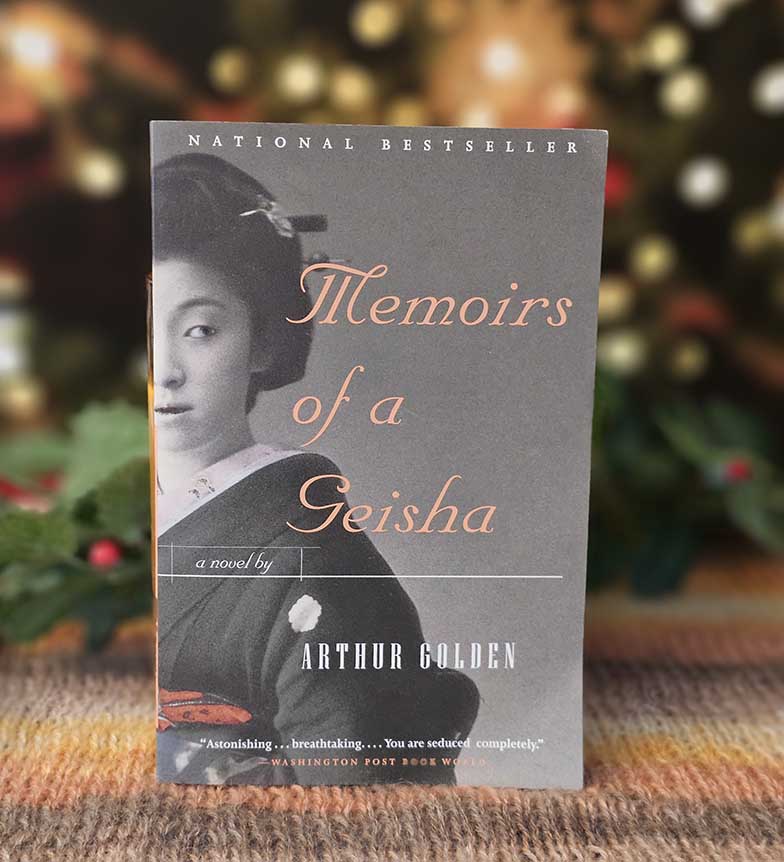
Nemesis
by Philip Roth
Spoiler Warning
This review may contain spoilers. Read at your own discretion if you haven't finished the book yet.
Overview
Nemesis is Philip Roth's final novel, a lean, tragic story about a polio epidemic in 1940s Newark and a young man consumed by guilt and questions about God, fate, and responsibility.
The Story
Summer 1944. Bucky Cantor is a playground director in the Jewish Weequahic section of Newark. He's strong, dedicated, responsible - a man who defines himself by his duty to the children in his care and his community.
But he's also been kept out of WWII due to poor eyesight, a fact that gnaws at him as other men serve.
Then polio strikes. Children start falling ill, some dying, some left paralyzed. Bucky watches helplessly as the playground he supervises becomes ground zero. He questions everything: his faith, his responsibility, whether he's somehow to blame.
The book is narrated by someone who knew Bucky, creating a retrospective frame that tells us from the start this won't end well.
What Works
The Historical Setting
Roth brilliantly recreates 1940s Newark during a polio epidemic. Before the Salk vaccine, polio epidemics terrorized communities every summer. Parents kept children home, swimming pools closed, camps shut down. No one knew how it spread or who would be next.
The fear, the rumors, the desperate precautions, the randomness of who got sick - Roth captures it all vividly.
The Tragedy Structure
This is explicitly structured as a tragedy in the classical sense. The narrator tells us early that Bucky's story won't end well, creating a sense of doom and inevitability that hangs over everything.
We watch Bucky make choices that seem reasonable but lead inexorably toward disaster. Like a Greek tragedy, character is fate.
The Central Question
Why do innocent children suffer? Is it God's will? Random chance? Someone's fault? When tragedy strikes, how do we assign blame and find meaning?
Roth doesn't answer these questions, but he explores them with intelligence and depth.
The Psychological Portrait
Bucky's all-consuming guilt is psychologically real, even when it's irrational. His need to take responsibility, his inability to accept randomness, his sense that he must have done something wrong - it's painful and believable.
What Doesn't Quite Work
The Narrative Distance
The choice to have someone else narrate Bucky's story creates distance at crucial moments. We're told about Bucky's experiences rather than fully inhabiting them. This keeps the book emotionally cooler than it might be.
Bucky's Rigidity
Bucky's character is so rigid, his guilt so absolute and unchanging, that he becomes somewhat frustrating. There's little growth or evolution, just deepening entrenchment in his position.
While psychologically plausible (some people do get stuck in guilt), it makes for a character who's hard to fully connect with.
Philosophy Over Story
Sometimes Roth's interest in exploring fate vs. responsibility, God's justice, and the nature of guilt feels more like intellectual exercise than lived human experience.
The book can read more like a philosophical meditation than a novel, with ideas taking precedence over emotional engagement.
Emotional Coolness
Despite the tragic subject matter - children dying, a good man destroyed by guilt, lives ruined - the book maintains a certain emotional distance. You admire the craft but don't feel the pain as deeply as you might.
The Themes
Guilt and Responsibility
When is guilt rational and when is it pathological? Bucky cannot separate himself from events he had no control over.
God and Suffering
If God is just, why do innocent children die? If God is all-powerful, why does He allow such suffering? Or is there no God, just random chance?
Masculinity and Powerlessness
Bucky's identity is built on physical strength and the ability to protect. The epidemic strips this away, leaving him impotent in the face of disease.
Fate vs. Free Will
Are we agents of our own destiny or are we at the mercy of forces beyond our control?
The American Experience
This is specifically Jewish American, specifically 1940s Newark, specifically about a disease that terrorized a generation before being conquered by science.
Why 3.3 Stars?
This is a well-crafted, thoughtful novel by a literary master exploring profound questions. The historical setting is vivid, the tragedy structure is clear, the themes are important.
But it doesn't quite come together emotionally. The narrative distance, Bucky's rigidity, and the philosophical heavy-handedness keep it from being fully engaging.
I admire it - the craft, the intelligence, the ambition - but I don't love it. It's a book that's impressive without being moving, thought-provoking without being emotionally satisfying.
Who Should Read This
- Philip Roth fans wanting to complete his work
- Readers interested in 1940s American Jewish life
- Those who appreciate literary fiction tackling philosophical questions
- Anyone interested in historical perspectives on polio
- Readers who enjoy tragedy in the classical sense
- Those who don't mind narrative distance and philosophical focus
Final Thoughts
Nemesis is Philip Roth in his late style - lean, focused, intellectually ambitious, emotionally restrained. It's a serious book about serious questions, written with skill and intelligence.
As Roth's final novel, it's a fitting capstone - returning to themes he explored throughout his career (American Jewish identity, God and faith, masculinity, responsibility) while maintaining his commitment to formal experimentation.
But it's not his most successful work. The structure creates distance, the protagonist's rigidity becomes wearing, and the philosophical exploration sometimes overwhelms the human story.
Worth reading for Roth fans and those interested in its themes, but not the place to start with his work. Admirable but not entirely satisfying. ⭐⭐⭐
My Notes & Takeaways
A Plague Story About Guilt and Fate
Nemesis is Philip Roth's meditation on a polio epidemic in 1940s Newark, but it's really about guilt, fate, God, and how we assign blame when tragedy strikes.
The Story
Summer 1944, Newark, New Jersey. A polio epidemic is sweeping through the city, killing and paralyzing children. Bucky Cantor, a young playground director who was kept out of WWII due to poor eyesight, watches helplessly as the children in his care fall ill.
Unable to serve his country in war, unable to protect the children he's responsible for, Bucky becomes consumed by guilt and questions of responsibility, fate, and divine justice.
What Roth Explores
Guilt and Responsibility: When is guilt earned and when is it imposed? When children die, who's to blame?
God and Justice: If God exists, why do innocent children suffer? Is it punishment? Random chance? Or is there no God at all?
Masculinity and Duty: Bucky defines himself by physical strength and responsibility. The epidemic strips away his ability to protect, attacking his identity.
The Greek Tragedy Structure: The narrator reveals early that this will end badly, creating a sense of inevitable doom that permeates the story.
American Life Interrupted: Polio epidemics were terrifyingly common before the vaccine, disrupting summers and terrifying parents. Roth captures that fear.
What Works
Historical Atmosphere: Roth vividly recreates 1940s Newark during a polio epidemic - the fear, the rumors, the desperate attempts to avoid contagion, the summer camps closing, the children suffering.
The Tragedy: This is structured like a Greek tragedy, with a protagonist undone by his own character, fate inexorably closing in, and a narrator who knows how it ends.
The Guilt Theme: Bucky's consuming guilt is psychologically real and painful to watch, even when it's irrational.
The Questions: Roth doesn't provide easy answers about God, fate, responsibility, or suffering. He presents the questions powerfully.
What Doesn't Quite Work
The Narrator: The choice of narrator creates distance from Bucky at crucial moments, keeping us from fully inhabiting his experience.
Bucky's Rigidity: While psychologically plausible, Bucky's absolute inability to see beyond his guilt becomes frustrating. There's little character growth or evolution.
The Philosophical Heavy-Handedness: Sometimes Roth's exploration of fate vs. responsibility feels more like philosophy lecture than lived experience.
Emotional Distance: Despite the tragic subject matter, the book can feel emotionally cool, keeping readers at arm's length from the pain.
Why It's Important But Not Entirely Successful
This is classic Roth - intellectual, probing difficult questions, interested in character psychology, set in mid-century American Jewish life. The themes are profound, the historical setting is vivid.
But something keeps it from being fully engaging. The narrative structure creates distance. Bucky's rigidity makes him hard to connect with. The philosophy sometimes overwhelms the story.
It's a book I admire more than love - impressive in craft and ambition, but not quite emotionally satisfying.
You Might Also Like

Memoirs of a Geisha
by Arthur Golden
A stunning portrait of a geisha's life in pre-war and wartime Japan. Through the eyes of Sayuri, we witness the beauty, artistry, and complex world of geisha culture.

The Revisioners
by Margaret Wilkerson Sexton
A dual-timeline story connecting two women—one in 1924 Louisiana fighting to keep her land, and one in modern times struggling to save her family home—explores themes of race, land ownership, and generational trauma. An ambitious literary novel about heritage and resistance.

Station Eleven
by Emily St. John Mandel